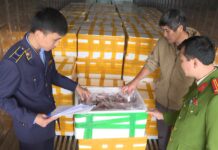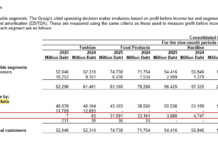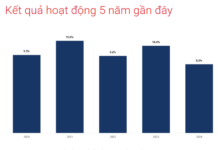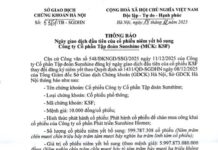Speaking at the seminar, Mr. Nguyen Van Dinh, a real estate legal expert, shared his thoughts on the ongoing challenges surrounding agricultural land. He noted that with the vibrant state of the real estate market, people can no longer afford to idle away their time cultivating rice fields. As a result, there’s a growing desire among farmers to hoard rural land for commercial ventures.
Mr. Dinh highlighted the current issue of wasteful land usage, with many fields left abandoned. He expressed hope that new legislation would “untie” agricultural land, allowing for more dynamic usage. For instance, while combining agricultural land with aquaculture is technically illegal, the revenue from shrimp farming can be 30 times higher than that of rice cultivation, incentivizing farmers to pursue such ventures, even if it means breaking the law.

Mr. Nguyen Van Dinh, Real Estate Legal Expert, at the event.
In reality, the Land Law aims to strike a balance across regions and diverse entities. While rice cultivation is crucial for national food security, rice farmers also require mechanisms to safeguard their interests. Additionally, certain impoverished provinces have resorted to developing golf courses, urban areas, and industrial parks to boost their economic status.
“I highly appreciate the law’s emphasis on balanced development. Notably, the law includes provincial planning to maintain rice fields and provides tools for budgetary regulation through relevant laws to support the budgets of these provinces,” said Mr. Dinh.
Furthermore, Mr. Dinh commended the law’s attention to balancing the interests of various stakeholders. He praised the expansion of land usage options, including legal provisions for land reclamation, coastal expansion, vertical expansion, and the utilization of underground and aerial spaces.
“If we can’t increase the horizontal or vertical land area, we must enhance the quality of land usage,” he asserted. “Therefore, I applaud the law’s promotion of multi-purpose land usage.”
Another positive aspect, according to Mr. Dinh, is the legalization of combining rice cultivation with commercial ventures. He cited the example of cafes operating on rice fields, generating monthly revenues equivalent to a year’s worth of rice farming. However, due to the lack of a legal framework, these endeavors are still considered illegal. The new law aims to rectify this situation by harmonizing the interests of various social entities.
Farmers, Mr. Dinh suggested, should present their plans to the managing authorities to ensure strict oversight when using agricultural land for commercial purposes. This way, a balance can be maintained between the interests of the state and the people.
Additionally, Mr. Dinh emphasized the importance of implementing measures to collect taxes, ensuring that people’s rights and obligations are respected. He proposed that those benefiting from using agricultural land for commercial purposes should contribute a portion of their profits to the state budget, allowing other entities to benefit from their ventures.
Mr. Dinh also voiced his concern about the delicate balance between combining land usage and preventing illegal land use conversion. He worried that allowing commercial activities on farmland might encourage people to build permanent concrete structures, making it impossible to revert the land to rice cultivation.
Echoing similar sentiments about the proliferation of homestays and farm stays without proper planning, Mr. Le Van Binh, Deputy Head of the Land Department, Ministry of Natural Resources and Environment, offered his perspective: “In my opinion, there are two approaches: one is for agricultural producers to use their land for tourism purposes, and the other is for tourism land to be used for agricultural activities to attract customers. In both cases, the land is being used for commercial purposes.”
The Land Law, as outlined in Article 218, permits the multi-purpose usage of agricultural land to increase income. However, it stipulates that the primary purpose of the land should remain agricultural, not entirely diverting from its original intent.








































